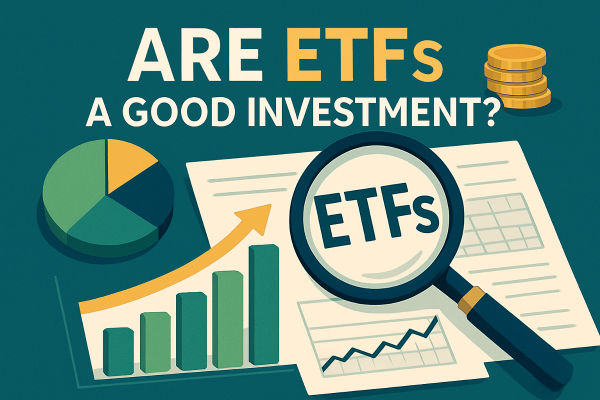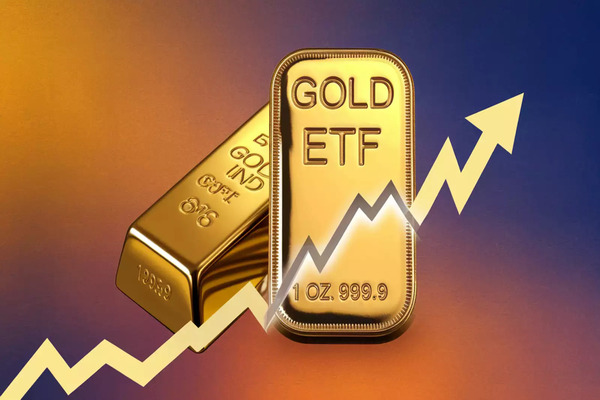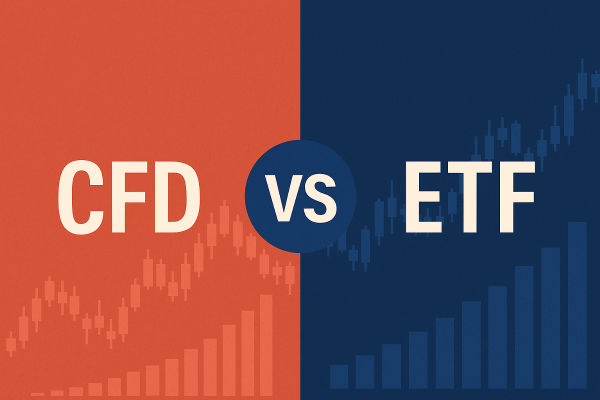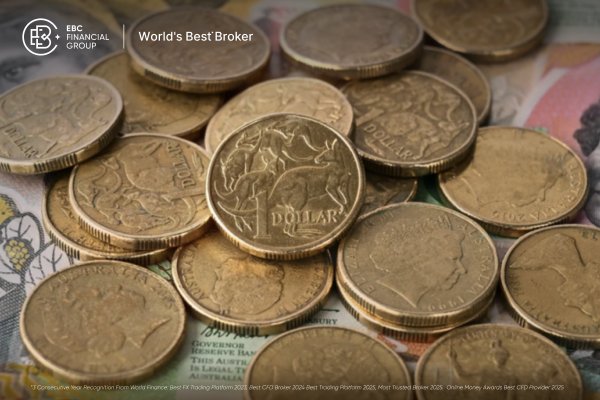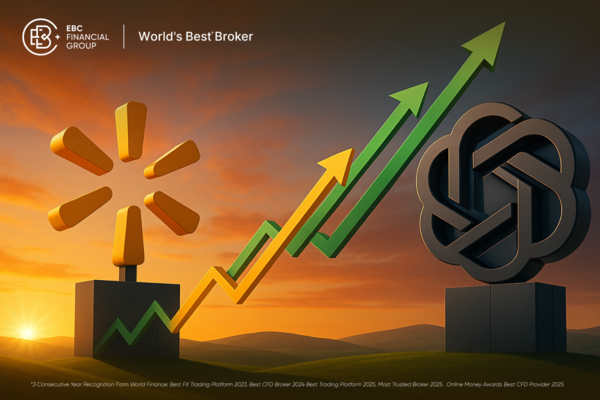In times of market uncertainty, inflation, or global tension, investors often turn to gold as a safe haven. But in today's digital financial landscape, owning physical gold isn't the only option.
Enter the Gold ETF (Exchange-Traded Fund), a modern, accessible way to gain exposure to gold without the hassle of storage or security risks. But how does it compare to owning real gold bars or coins?
In this guide, we'll break down what a Gold ETF is, how it works, and whether it's a safer and smarter alternative to holding physical gold.
What Is a Gold ETF?
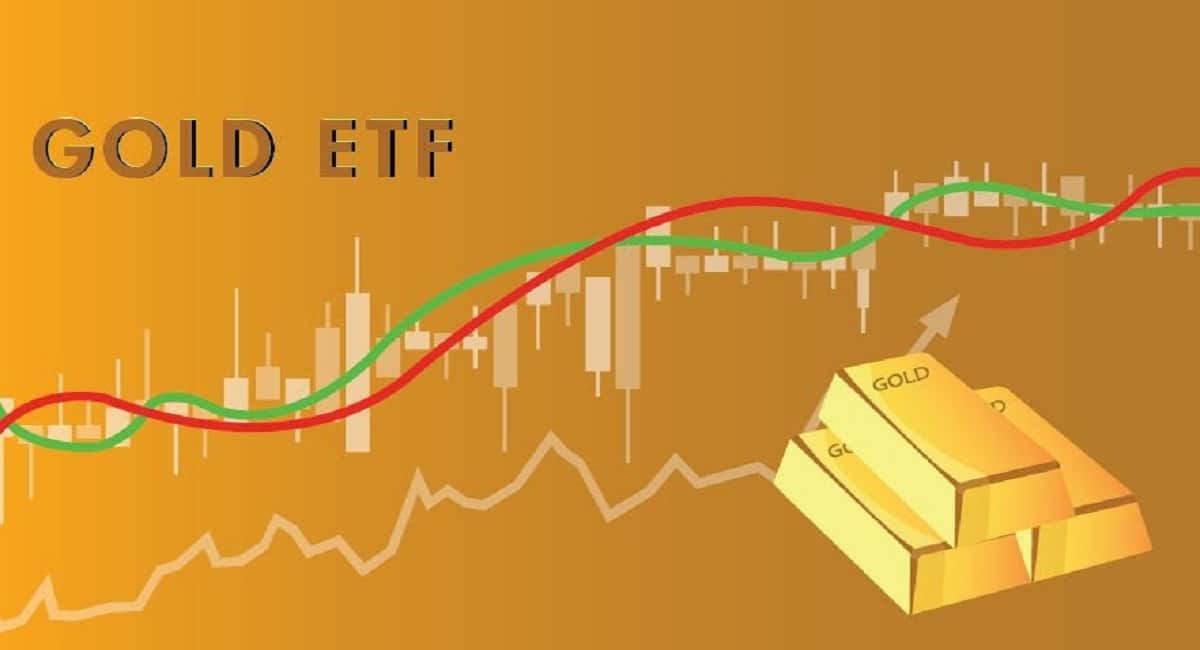
A Gold ETF (Exchange-Traded Fund) is a financial instrument designed to track the price of gold, allowing investors exposure to the metal without owning it. Major examples, like SPDR Gold Shares (GLD) or iShares Gold Trust (IAU), hold actual bullion in vaults and issue shares that represent fractional ownership of that gold.
When you buy shares of a Gold ETF, you're essentially purchasing a small portion of the fund's gold holdings. That exposure closely mirrors the spot gold price, though minor variations (known as tracking errors) may occur.
Gold ETFs trade like stocks on regulated exchanges, meaning they can be bought or sold at any time markets are open. They pay no dividends (gold doesn't produce income), but provide instant liquidity with no storage worries.
Why Investors Choose Gold ETFs
1) Accessibility and Liquidity
Gold ETFs offer seamless access to gold investing through existing brokerage accounts. In contrast to bullion, there's no requirement for safe storage, purity checks, or negotiations.
2) Ease and Convenience
No safes or vaults. No insurance premiums. ETF shares are electronic, with no physical handling or logistics involved.
3) Cost Efficiency
Although physical gold has premiums, manufacturing fees, and sales tax, ETFs generally have low annual expense ratios (usually 0.17%–0.50%), which slowly decrease returns. Many ETFs also avoid VAT or GST applied to physical gold in some countries.
4) Transparency and Regulation
ETF holdings are audited regularly, and sponsors are often major institutions with strong reputations. Many Gold ETFs are regulated under securities laws, adding a layer of investor protection.
5) Diversification Tool
Including gold ETFs in a portfolio provides diversification and can act as a hedge against inflation, currency devaluation, or market turbulence. They often outperform equities in crisis periods.
Gold ETFs: Advantages and Drawbacks
| Advantages |
Disadvantages |
| Easy to buy and sell through any stock brokerage account |
No physical ownership of gold; you can’t touch or store it yourself |
| Highly liquid — can be traded on stock exchanges during market hours |
May incur management fees or tracking errors relative to gold spot prices |
| No need for secure storage or insurance like physical gold |
Subject to market risks and volatility like other equities |
| Transparent pricing, often closely tracking gold prices |
Not ideal for extreme crisis scenarios where physical gold may be more useful |
| Suitable for SIP (Systematic Investment Plan) or regular investing |
Doesn’t generate interest or dividends, just like physical gold |
Why Investors Hold Physical Gold? The Traditional Hedge
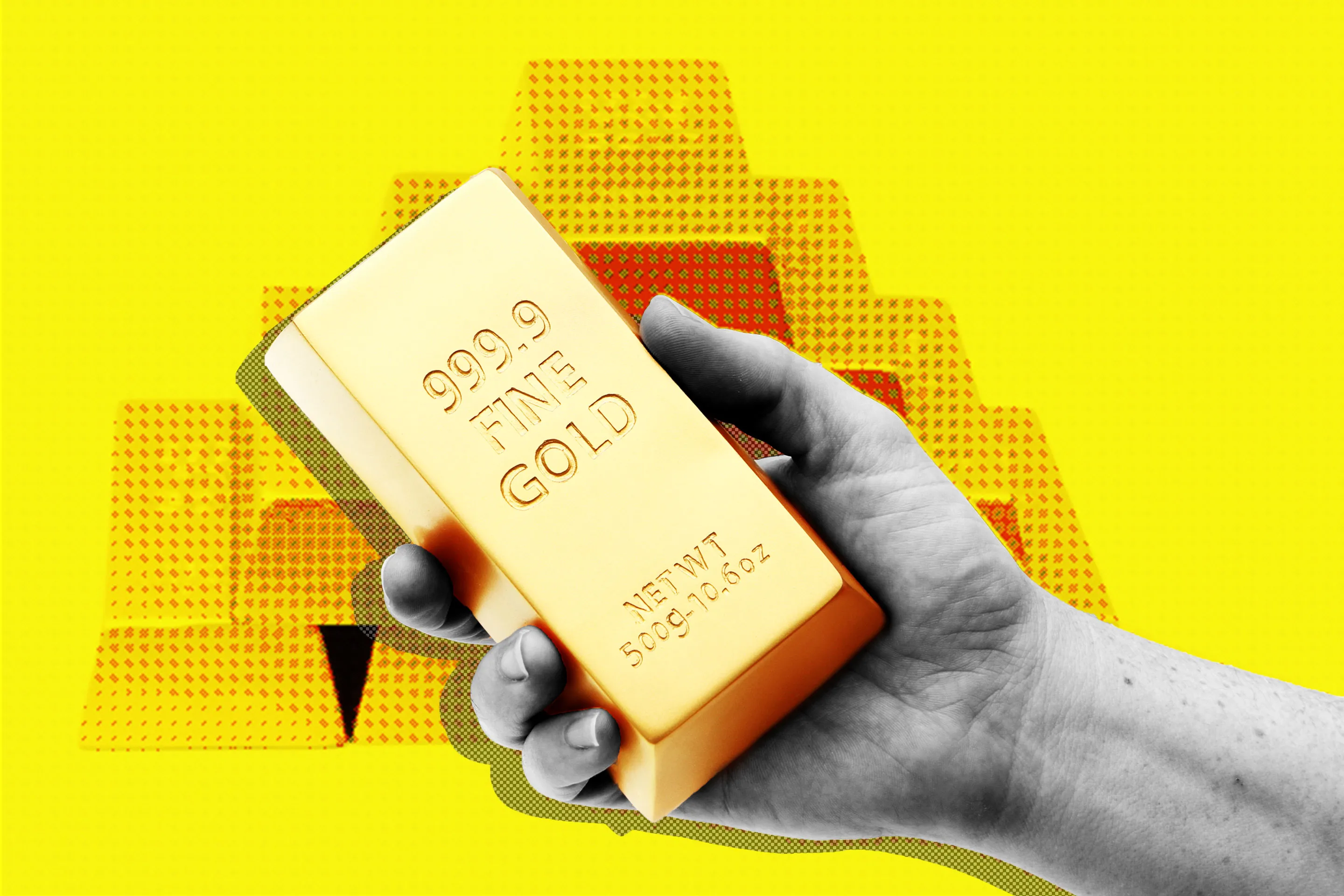
1) Tangible, Direct Ownership
There's no intermediary, no trustee or custodial risk. Owning bullion or coins means you physically possess the asset.
2) No Ongoing Fees
Once purchased, physical gold requires no maintenance. Granted, storage or insurance costs may apply, but there's no recurring expense built into ownership.
3) Safe Haven in Extreme Crisis
In financial breakdowns or bank failures, physical gold remains outside the system. It can be exchanged directly or stored offline if needed.
4) Family Heirloom and Cultural Value
Physical gold carries symbolic and generational significance. It can be presented as a gift or utilised in rituals, and can hold both sentimental and monetary worth.
Gold ETF vs Physical Gold: What Makes One "Safer" Than the Other?
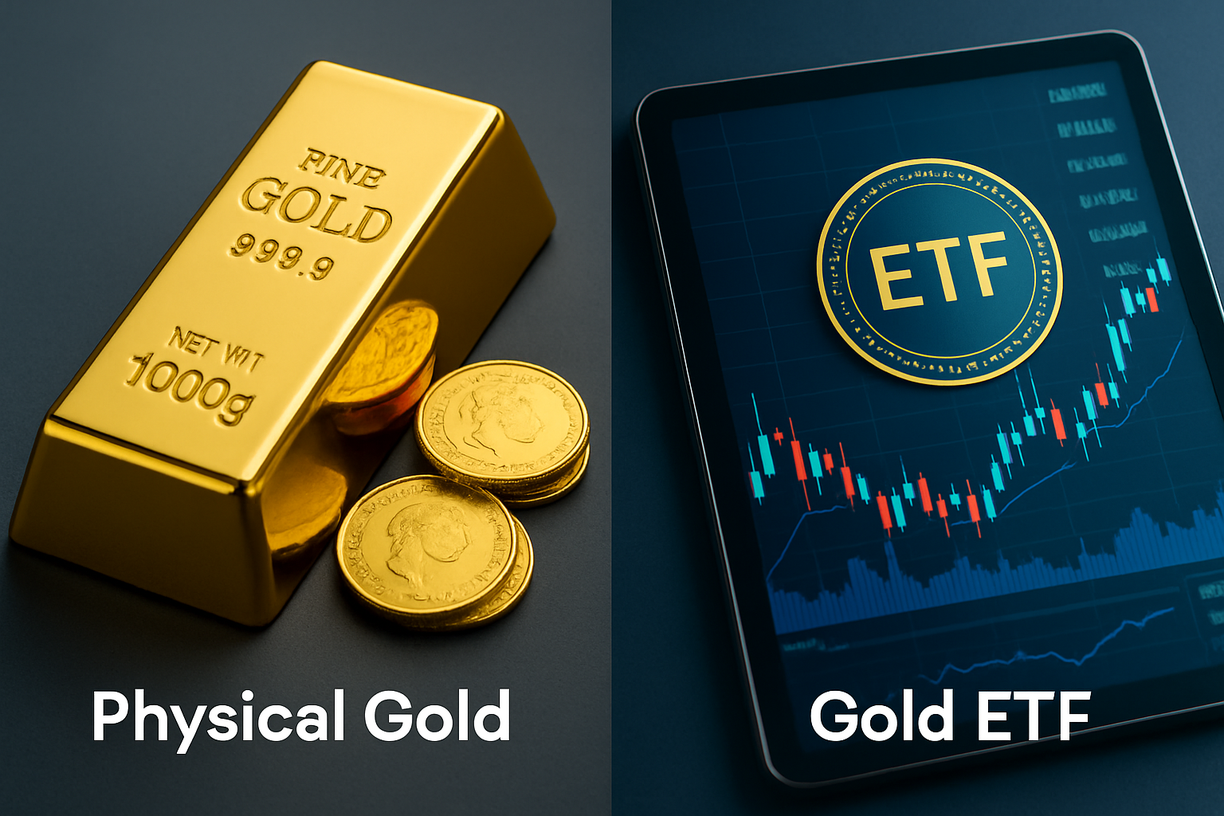
Counterparty Exposure
Physical gold has no reliance on institutions. Gold ETFs require faith in the provider and the custodian's custody arrangements. Counterparty risk is low for well-known funds, but it still exists.
Liquidity Comparison
ETFs trade instantly at market prices, accessible during trading hours. Selling physical gold may involve dealers, authentication delays, and price discounts. However, in severe downturns, physical gold sidesteps market disturbances that could affect ETFs.
Cost Profile
Inflation-adjusted, ongoing ETF fees may exceed one-time premiums and storage costs over very long horizons. But physical gold premiums and storage costs make short-term ownership burdensome.
Tax Treatment
In the U.S., physical and ETF gold often face similar tax treatment, although they are structured differently. Other countries may treat them differently; for instance, India offers indexation benefits for physical gold held for over three years.
Which One Should You Choose?
| Criteria |
Gold ETF |
Physical Gold |
| Liquidity |
Highly liquid during market hours |
May require time/payment negotiation to sell |
| Storage & Security |
Vaulted, professionally secured; investor not responsible |
Personal safekeeping; risk of theft or loss |
| Counterparty Exposure |
Low but present (trustee, custodian) |
None; direct ownership |
| Expense Structure |
Annual fees (0.17–0.50%) |
Premiums, storage, insurance costs |
| Tax Efficiency |
Varies by ETF structure and jurisdiction |
Collectible rates in US; indexation benefits in some countries |
| Accessibility |
Buy via broker; small units |
Must purchase coins or bars; requires size/purity verification |
| Role in Crisis Portfolio |
May be impacted by market disruptions |
Offers ultimate offline fallback |
Ideal for Gold ETF Investors
Those who prefer digital assets with high liquidity
Investors focusing on low-cost, tax-advantaged portfolios
People who find physical storage impractical
Individuals with access to modern trading platforms
Ideal for Physical Gold Holders
People prioritising absolute custody with no third-party involvement
Cultural or inheritance-minded investors
Those in regions with unstable banking systems or currencies
Long-term wealth preservation without concern for trading liquidity
All in all, the safer option depends on your goals: for ease, liquidity, and low-cost long-term exposure, ETFs are highly efficient.
For maximum independence from financial institutions, physical gold is unmatched. Many investors hold a blend of both depending on time horizon, risk preference, and access.
Blending both, such as holding 80% ETFs and 20% bullion, can also offer liquidity with a physical fallback.
Recent Trends: Why Gold ETFs Won in 2025
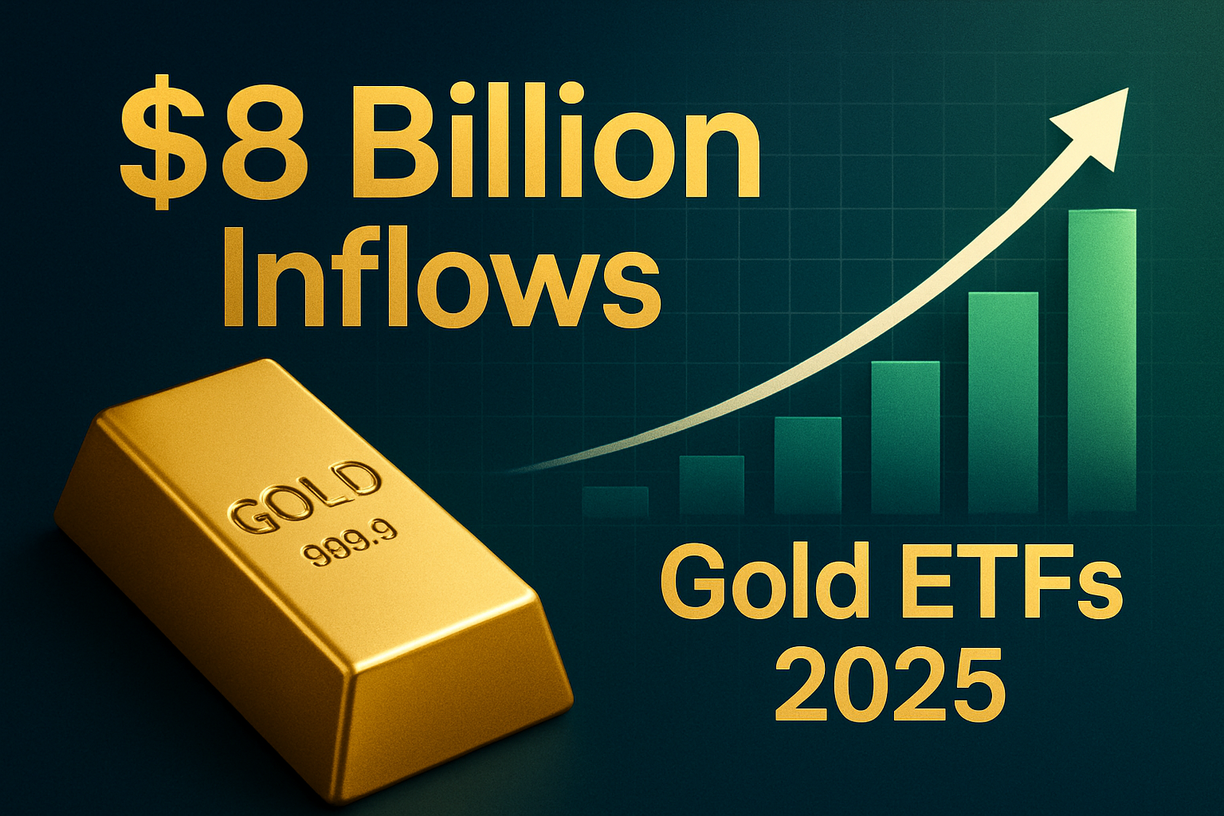
Gold ETFs saw $8 billion inflows in 2025, as investors sought hedges during geopolitical and macroeconomic uncertainty, particularly amid rising U.S. debt concerns.
From 2016 to 2025, gold-based ETFs outperformed equity ETFs in approximately 70% of years, underscoring their resilience in turbulent environments
Numerous investors moved toward ETFs in 2024–2025 as risks related to futures, rates, and currencies increased, prioritising liquidity and accessibility over the complexities of physical holdings.
Practical Steps to Invest in Gold ETFs
Open a brokerage account with access to ETFs traded on stock exchanges.
Choose a trusted gold ETF, such as SPDR Gold Shares (GLD) or iShares Gold Trust (IAU), known for strong liquidity and low fees.
Check expense ratio and custodianship: lower fees (0.18%–0.40%) and secured bullion holdings.
Evaluate tax implications based on your country, as some ETFs produce K-1 forms, which are taxed as collectables.
Trade during market hours using limit or market orders; dividends aren't a factor, but bid-ask spreads are.
Monitor tracking performance and rebalancing annually or when your exposure drifts from targets.
Frequently Asked Questions
Q1. What Is a Gold ETF and How Does It Work?
Answer:
A Gold ETF (Exchange-Traded Fund) is a fund that tracks the price of gold and trades on stock exchanges like a regular stock. When you invest in a Gold ETF, you're buying units that represent a specific quantity of gold, typically backed by physical holdings or gold futures contracts, without needing to own or store the metal yourself.
Q2. How Do I Invest in a Gold ETF?
Answer:
You can invest in a Gold ETF through any brokerage account, just like buying a stock. Search for the ETF ticker (e.g., GLD, IAU), decide how many units you want, and place your trade during market hours. You can also set up recurring investments for long-term exposure.
Q3. Do Gold ETFs Pay Dividends or Interest?
Answer:
No, Gold ETFs do not pay dividends or interest because gold itself is a non-yielding asset. They are designed purely to mirror the price movements of gold, so your returns come from capital appreciation rather than income.
Conclusion
In conclusion, when evaluating safety, both options bring different risk profiles. Gold ETFs are safer in terms of ease, liquidity, and low operational hassle, but carry institutional risk and fees.
Physical gold avoids institutional exposure entirely but requires vigilant security and may have higher initial costs. For most investors, a combination provides balance: ETFs for regular portfolio allocation and physical gold as a strategic hedge.
Disclaimer: This material is for general information purposes only and is not intended as (and should not be considered to be) financial, investment or other advice on which reliance should be placed. No opinion given in the material constitutes a recommendation by EBC or the author that any particular investment, security, transaction or investment strategy is suitable for any specific person.












